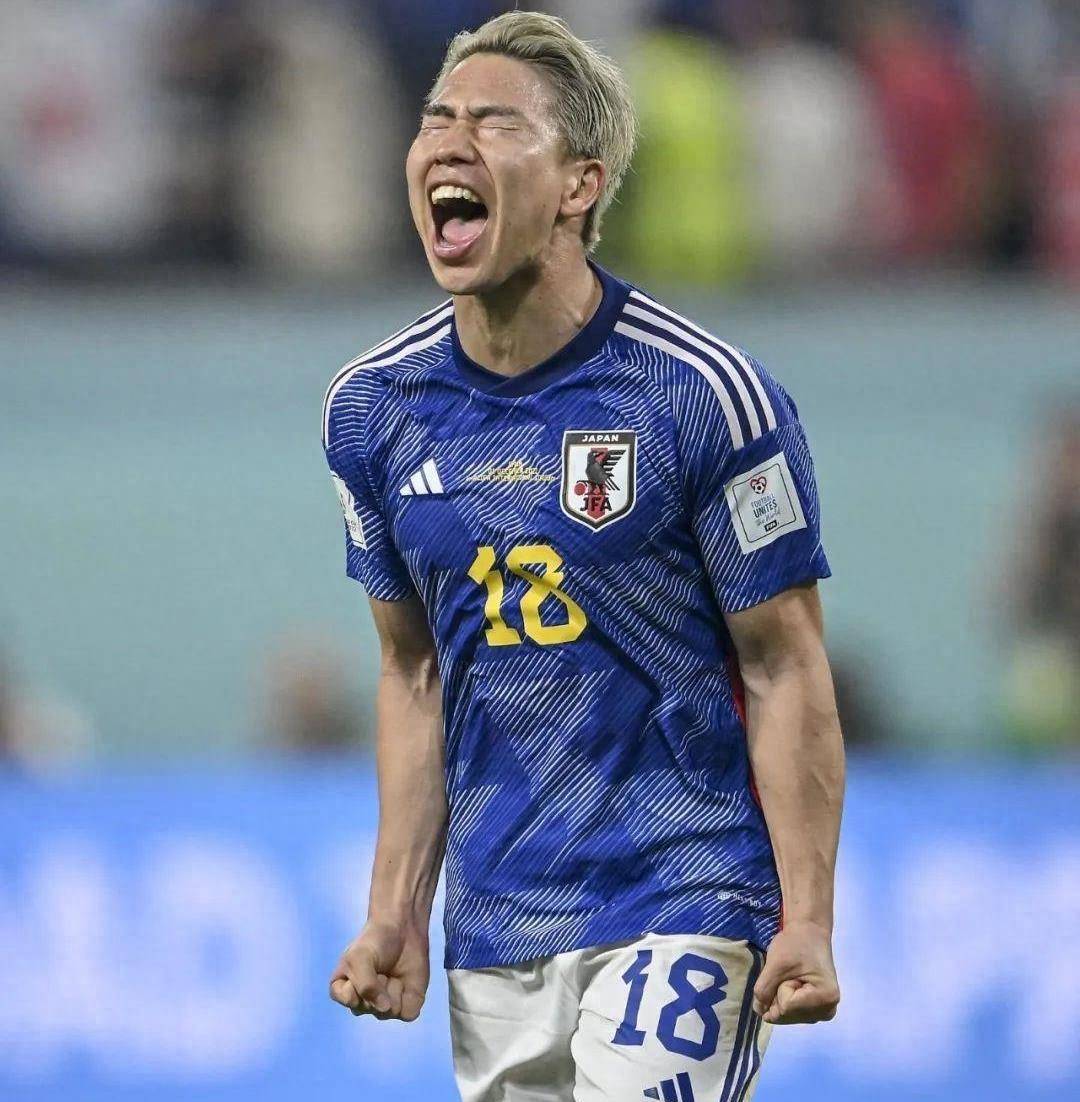1. The jingle of Japanese football formula is a nine-point loss and smooth mouthJapanese football, draw and go highJapanese football, five points low must hitJapanese football, sixty-seven to escape.
2.1 In Asia, Japanese football is considered to be super first-class, but on the world stage, it is second-class and lower-middle. Although the Japanese team plays in European competitionsJapanese footballThe group may face challenges that are difficult to qualify, but this does not affect its leading position in Asia. 2 Japanese football's forward strength in Asia is relatively average, but the overall technical and tactical level is high, and the team cooperation is good. Whether in terms of offense or defense, the Japanese team is outstanding.
3. The reason why Japanese football has made so rapid progress is mainly due to its comprehensive and scientific development strategy, the improvement of the youth training system, the fine polishing of technology and the integration with international advanced football concepts. First of all, the development of Japanese football benefits from a clear and consistent long-term planning. From the popularization of campus football to the establishment of professional leagues, Japanese football has embarked on a systematic development path. Especially in the 1960s, Japan began to attach importance to football.
4.1 Japan's football performance in the World Cup has not exceeded the quarter-finals. 2 Japan's football level is super first-class in Asia, but it is second-rate and lower-level in the world. It has no absolute strength and may be difficult to qualify in the competition in the European region. 3 Although Japan has defeated Germany and Spain in games, this does not mean thatJapanese footballThey have the strength to compete with world-class teams. 4 Japan's striker line is relatively weak.
5. The Japanese Football League is divided into three levels. J-League is the domestic name of the Japanese Professional Football League. It currently contains three different levels of leagues. J1 League Japanese Professional Football League A, J2 League Japanese Professional Football League B, J3 League Japanese Professional Football League A, there are 59 teams. J1 League has 18 teams, J2 League has 22 teams, and J3 League has 19 teams. Due to the China Sports Lottery competition game currently only.
6. The Japanese men's football team is currently ranked 20th in the global football world. As a strong team in Asian football, the Japanese men's football team has always maintained high competitiveness in international football. The Japanese men's football team's world ranking is based on their performance in various international competitions, including heavyweight events such as the World Cup and the Asian Cup. In these competitions, the Japanese team has successfully advanced to the World Cup finals many times, and its stable performance and high-level competitiveness are the result of this ranking.
7. Japan is relatively strong in playing football in Asia, but it has not yet reached the first-class level in the world. The following is a specific analysis of the strength in Asia. Japan's J League has certain competitiveness in Asia and has attracted many Asian and international players 'joining the national team. The Japanese national team has achieved many good results in competitions such as the Asian Cup and the East Asia Cup, often ranking among the top three, demonstrating its football strength in Asia worldwide.
8. The Japanese men's football team ranks 20th in the world. As a strong team in Asia, its football strength has always been at a high level around the world. The following will explain in detail its ranking and football development. The Japanese men's football team's world ranking is determined through the performance of a series of competitions and championships, including the stable and outstanding performance of the Japanese team in these competitions in important international events such as the World Cup and the Asian Cup, and has entered the World Cup finals many times.
9.1 The Japanese football league system used to have only one league, but it later developed and divided into two levels: J1 and J2 leagues, 2J1 leagues, namely the Japanese Professional Football League A. The old strong teams represented by teams such as Urawa Red Diamond, Osaka Flying Foot Kashima Antlers, have a high level of competition, while teams like FC Tokyo are known for their strong ability to score points away from home. They often play draws in the 3J2 League, namely the Japanese Professional Football Group B League, which is characterized by the relatively balanced level of each team.
10. The Japanese football league system is divided into multiple levels. The most well-known ones are the Japanese Professional League J League and the Japanese Second Division League J2 League. The names of these leagues are derived from the English abbreviation of their country names. For example, the professional league of Japan's JAPAN is called the J League, while the professional league of Korea's KOREA is called the K League. Although there are some similarities in the system between the football leagues of China, Japan and South Korea, the league of each country is called the K League.
11. Japanese football is not necessarily ranked first in Asia. 1 The competitive environment According to data from Global Sports, the football levels of Asian countries are close to each other, and the competition is very fierce. Other Asian countries are also making unremitting efforts to improve their football levels. Therefore, it is difficult to clearly position Japanese football as the number one in Asia. 2 Style Characteristics Japanese football attaches great importance to technology and teamwork, and is famous for its "pass-and-control" style. This style is used in the face of players with comparable technical levels.
12,2 Another success of the Japanese team in talent training is to borrow chickens to lay eggs. Famous star Hidetoshi Nakata is a typical representative. 3 Japanese players have been baptized by the world's high-level professional leagues, and their skills and tactics have been significantly improved. Football concepts have begun to integrate with the world. This is also one of the important reasons why the Japanese team has achieved excellent results and has the ability to compete with the world's strong teams. 4 Japanese football is a South American-Brazilian style with Asian characteristics, and Japanese football is related to Brazil.
13. The most famous football players of the Japanese team include the following KuniShigeru Kamamoto, who was born in Kyoto, Japan, and striker Chiro Miura was born in Shizuoka, Shizuoka Prefecture, Japan. He is a striker and has played for many well-known clubs in his career, including Kawasaki Yomiuri, Sao Paulo, Palmeiras Genoa Football Club, etc. Hidetosu Nakata was born in Kofu City, Yamanashi Prefecture, Japan. He plays as a midfielder and played for Hikinori Hiratsuka, Rome, Florence.
14. The tournament began in 1993 and aims to promote the development of Japanese football, strengthen its strength, and promote regional revitalization. JLEAGUE is not only one of the leading football leagues in Asia, but also one of the most competitive leagues in the world. At first, JLEAGUE had only one league level, but in 1998, the league was divided into two levels, J1 and J2, and a promotion and downgrade system was introduced. In terms of league history, Japan only began to develop football in the early 20th century. In 1921, Japan held it.
15. 1st Japan B and Japan Football League are two different levels of the Japanese football league system. They have significant differences in many aspects. 2 In short, Japan Football League J League is the top league in Japanese football, while Japan B J2 League is its sub-league. The 3rd Japan Football League, fully known as Japan Professional Football League A, was established in 1993. It is the highest-level professional football league in Japan. 4 This league brings together Japan's best players.
16. The Japanese football team has always been among the best in the FIFA world rankings. In the latest FIFA world rankings in 2023, the Japanese team ranks 20th, ranking first in Asia. 1 Strong youth training system Japanese football's youth training system is recognized as a world leader. From primary school to university, Japan has an extensive football youth training network and has trained a large number of outstanding players. When they come to adulthood, many of whom can occupy a place in Europe's top leagues, thereby improving significantly.





还没有评论,来说两句吧...